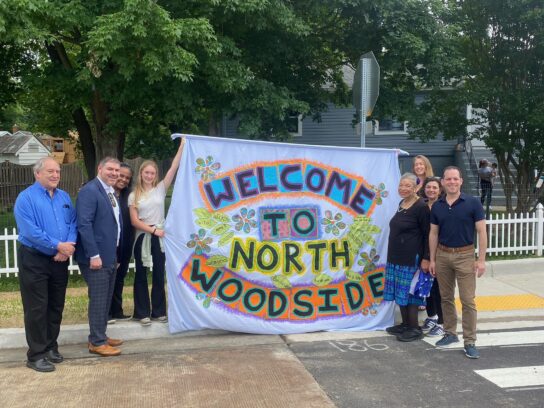
A bridge that for so many years separated Black and white residents in the Lyttonsville area of Silver Spring reopened May 24 as part of the Purple Line project.
The new bridge once again reconnects North Woodside, Lyttonsville and Rosemary Hills. The old, deteriorating one-lane wooden bridge closed in 2017.
The new two-lane bridge with sidewalks was built over the train tracks and is wider and longer than the original bridge.
The Talbot Avenue Bridge has reopened!
The reopening of the bridge will serve as a new connection between two neighborhoods and to signify the progress being made on the @PurpleLineMD.
Let’s continue bringing communities together. pic.twitter.com/BC1ccgidTF
— Evan Glass (@EvanMGlass) May 24, 2024
This morning was a long time coming as we celebrated the official opening of the new Talbot Ave Bridge between Lyttonsville & North Woodside! This bridge symbolizes progress but also our history, once as a means of segregation but now as a connection between communities. pic.twitter.com/XJnIPWlCgk
— Delegate Jared Solomon (@jaredssolomon) May 24, 2024
Since its closing, residents have held an annual Talbot Bridge lantern walk so people remembered the area’s history.
Lyttonsville has been a predominately African American community throughout its history. Real estate practices in North Woodside prevented Black residents from living in the area.
It was an all-Black enclave in Silver Spring founded in the 1850s by Samuel Lytton, a freed slave. All normal amenities and services were located in the nearby whites-only section of the town.
The bridge connected residents to a grocery and other stores, and the houses owned by white people that they were permitted to clean but not live in.
Longtime resident Charlotte Coffield called the bridge “our lifeline to civilization.” She previously recalled how she used to cross the bridge and then walk several blocks to Georgia Avenue, where she then took public transportation.
Coffield, who has lived in Lyttonsville all her life, is the third of five generations of her family to call Lyttonsville home. The bridge played a huge role in her family’s everyday life, she said.
Several people at a vigil several years ago recalled crossing the bridge and walking to Georgia Avenue and then taking a bus to the movie theater, hospital and other places that welcomed people of color.
The redesigned Talbot Avenue Bridge connecting the communities of #Lyttonsville and North Woodside is open! @MDOTNews @MTAMaryland and local officials celebrated at a morning ceremony. @ChrisVanHollen presented an official citation to the project. #connectingcommunities pic.twitter.com/7olRWaV27K
— Purple Line (@PurpleLineMD) May 24, 2024

Comments are closed.